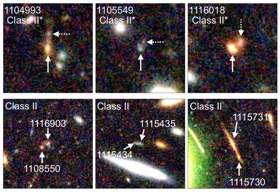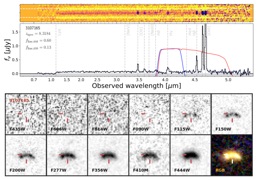
RESEARCH
I seek to understand how galaxies formed and evolved when the Universe was only a fraction of its present age. My research is focused through three key projects:
-
(1)JWST studies of galaxy evolution over cosmic time: For this we use our massive, 200-hour JWST Guaranteed Time Observations (GTO) CANUCS program that lets us investigate in detail the inner workings of thousands of low-mass galaxies at Cosmic Noon (z~2) and Cosmic Dawn (z>6). The CANUCS data set is now fully in hand (as of November 2023) and the first science results are out, but the richness of the data are such that we will be busy for years to come!
-
(2)Deep, wide-area multi-wavelegth studies of galaxy evolution: This is enabled by two large observing campaigns: The 68-night CFHT CLAUDS survey that together with partner deep surveys from other telescopes (Subaru HSC, Spitzer IRAC) lets us use several million galaxies over a wide redshift range to do enormously large statistical studies of the processes that drive galaxy evolution. CLAUDS is now followed by DEUS, currently underway on CFHT, which is building up a contiguous 10 sq degree U-band image in the Euclid Deep Field North (EDFN). The aim of DEUS is to enable accurate photometric redshift measurements in the EDFN in order to study how galaxy properties relate to their location within the Cosmic Web.
-
(3)Spatially-resolved spectroscopy of distant galaxies: The GIRMOS AO-fed, multi-IFU spectrograph now under construction by an international partnership, including our team at Saint Mary’s. GIRMOS will let us do detailed, spatially-resolved studies of 100’s of distant galaxies when commissioned at Gemini-North in 2027.
NEWS
2023 December 14: Bursty star formation in the early universe is driven by galaxy-galaxy interactions

2023 October 18: No, ΛCDM is not dead

Above are our JWST/NIRCam images and NIRSpec spectrum of one (of several we have) of such putative massive old galaxies: it’s neither massive nor old -- it’s star-forming (as the spectrum shows) and has relatively low mass.
